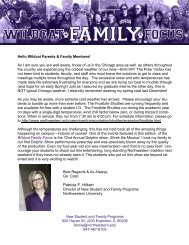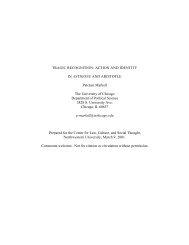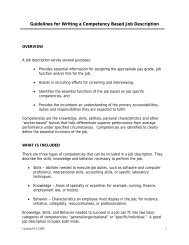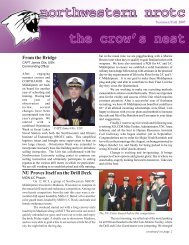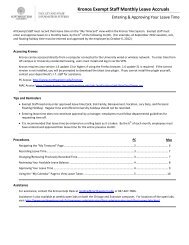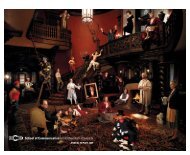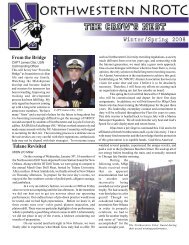Artistry Permits and Custom May Ordain - Northwestern University
Artistry Permits and Custom May Ordain - Northwestern University
Artistry Permits and Custom May Ordain - Northwestern University
You also want an ePaper? Increase the reach of your titles
YUMPU automatically turns print PDFs into web optimized ePapers that Google loves.
24<br />
very poor <strong>and</strong> have not even sufficient food to eat during their lives,” a sixteenth-century<br />
observer remembered, “[they] use every endeavor to have a piece of fine cloth or<br />
canequim 84 to serve as a shroud when they die.” 85 Therefore, more than any other<br />
manufactured material, cloth became an item of mass consumption in the Swahili world,<br />
joining producers, the ungwana, non-ungwana, <strong>and</strong> the state in a web of social relations,<br />
revealing culturally defined undercurrents of mutual aesthetic sensibility <strong>and</strong> culturemade-material<br />
claims of status.<br />
In clothing of cotton weave they fare 86<br />
2 �� Swahili cloth production <strong>and</strong> transcoastal exchange<br />
The production of cloth on the Swahili coast is particularly relevant to this study<br />
because the circulation of locally produced cloth enabled the Swahili not only to<br />
supplement foreign trade to the Zambezi region but also to meet the diversified dem<strong>and</strong><br />
of inter-town markets. These markets in turn facilitated closer relations between centers<br />
of production <strong>and</strong> areas far removed from production sites. The circulation of Swahili<br />
cloth exemplifies how textiles of local manufacture could be created to suit wider regional<br />
tastes <strong>and</strong> how dem<strong>and</strong> for them defined a cultural unit, incorporating <strong>and</strong> differentiating<br />
consumers from every socioeconomic level.<br />
Textiles were produced in many East African towns, from Mogadishu in the north<br />
to Sofala in the south. Though Mogadishu is excluded from this study, it is worth noting<br />
that it was exporting cloths to the Persian Gulf <strong>and</strong> Egypt before the sixteenth century.<br />
But the most sought-after <strong>and</strong> technologically sophisticated cloths were coming from Pate<br />
Isl<strong>and</strong> in the modern Lamu archipelago. 87 Cloth originating in the Pate area was both<br />
plentiful <strong>and</strong> particularly high in quality, <strong>and</strong> much of the town’s economic strength<br />
derived from its distribution of prestigious silk cloths made with thread unraveled from<br />
foreign textiles. According to de Monclaro:<br />
84 A coarse calico, still called kaniki in Swahili, usually dyed blue or black—very similar to the bafta. J. Irwin, “Indian<br />
Textile Trade in the Seventeenth Century,” Journal of Indian Textile History. 1 (1955): 26.<br />
85 Dos Santos, Ethiopia Oriental, 1:111.<br />
86<br />
L. de Camões, Os Lusiadas, stanza 47.<br />
87 The most comprehensive survey of the cloth industry in southern Somalia is E. Alpers, “Futa Benaadir:<br />
Continuity <strong>and</strong> Change in the Traditional Cotton Textile Industry of Southern Somalia, c. 1840-1980,” in Actes<br />
du Colloque Entreprises et Entrepreneurs en Afrique (XIXe et XXe siècles) Tome 1. Paris, 1981. 77-98. On<br />
Mogadishu cloth in Egypt, see H. Gibb, The Travels of Ibn Battuta.Vol. 2. Cambridge, 1962. 374. On Mombasan<br />
cloth, see “el Rei para Gonçalo Mendez, 28/2/1520,” in Axelson, South-east Africa, 1488-1530. 262.



